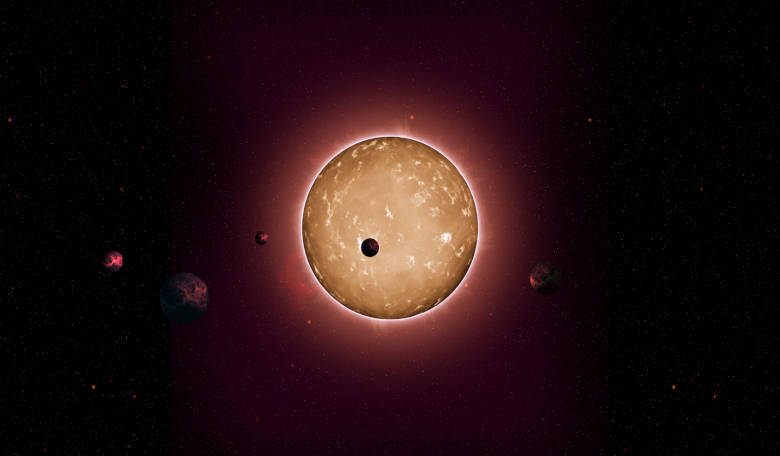Using a new algorithm designed to automatically sift through data collected by NASA’s Kepler mission, scientists at UCLA have identified 366 new exoplanets and 17 new multi-planet systems, including one with two Saturn-sized gas giant planets located unusually close to one another.
Launched by NASA on 7 March, 2009, the Kepler space telescope has in its lifetime helped to discover more than 2,600 planets outside our Solar System, and opened our eyes to the diversity of planets that exist in our galaxy.
Following problems with its reaction wheels three years into its search, NASA decided to modify Kepler’s original mission from hunting Earth-size and smaller planets in or near the habitable zone of Sun-like stars, to searching around smaller, dimmer red dwarf stars instead.
Dubbed K2, this “Second Light" mission lasted as long as Kepler’s first exoplanet hunt and bumped its count of surveyed stars up to more than 500,000. But, after nine years in deep space, Kepler ran out of fuel and NASA decided to retire the spacecraft in a safe orbit, away from Earth.
Although NASA’s newest exoplanet mission TESS has continued to survey the brightest stars near Earth for transiting exoplanets, Kepler’s data haul – the spacecraft downlinked roughly twelve gigabytes of data about once per month – is still being examined for signs of potential habitable exoplanets.
However, because of the problems Kepler experienced, scientists have not been able to use the same automated processes used to find transiting planetary candidates during its first mission as they have with the K2 data, meaning that each individual exoplanet of interest has required some amount of visual assessment.
Its a laborious task, so to overcome the problem, Jon Zink, a UCLA postdoctoral scholar, created a programme to weed out instrument noise or signals from an alternative astrophysical source that mimics a planetary signature.
Then, along with colleagues, Zink used the new software to analyse the entire dataset from K2 — about 500 terabytes of data encompassing more than 800 million images of stars — to identify likely planets in the processed data.
During their search, the team identified 747 unique planet candidates and 57 multi-planet systems. Of these candidates, 366 have not been previously identified, they say.
“Discovering hundreds of new exoplanets is a significant accomplishment by itself, but what sets this work apart is how it will illuminate features of the exoplanet population as a whole,” said Erik Petigura, a UCLA astronomy professor and co-author of the research.
Some of the objects identified by Zink and team were already known about, such as EPIC 211428897, a multi-planet system consisting of four Earth-sized planets orbiting an M dwarf star.
First spotted in 2017, only three planets were initially discovered in the system but subsequent studies have identified a fourth - a finding now strengthened by Zink and colleagues. A fifth could be hiding too but data limitations have meant that the team were unable to confirm its existence.
Other notable new discoveries include EPIC 249731291, an early-type F dwarf (or sub-giant) system with two short period gas giants. It’s interesting because it’s rare to find gas giants like Saturn in our own solar system, as close to their host star as they were in this case, say the team, so the planets could help scientists form a more accurate understanding of the parameters for how planets and planetary systems develop.
“The discovery of each new world provides a unique glimpse into the physics that play a role in planet formation,” Zink said.
With the huge dataset, Zink and team have now created a “catalogue” that will soon be incorporated into NASA’s master exoplanet archive.
“The catalog and planet detection algorithm that Jon [Zink] and the Scaling K2 team came devised is a major breakthrough in understanding the population of planets,” Petigura said. “I have no doubt they will sharpen our understanding of the physical processes by which planets form and evolve.”











